 History
History  History
History  Technology
Technology Top 10 Everyday Tech Buzzwords That Hide a Darker Past
 Humans
Humans 10 Everyday Human Behaviors That Are Actually Survival Instincts
 Animals
Animals 10 Animals That Humiliated and Harmed Historical Leaders
 History
History 10 Most Influential Protests in Modern History
 Creepy
Creepy 10 More Representations of Death from Myth, Legend, and Folktale
 Technology
Technology 10 Scientific Breakthroughs of 2025 That’ll Change Everything
 Our World
Our World 10 Ways Icelandic Culture Makes Other Countries Look Boring
 Misconceptions
Misconceptions 10 Common Misconceptions About the Victorian Era
 Mysteries
Mysteries 10 Strange Unexplained Mysteries of 2025
 History
History 10 Things You Didn’t Know About the American National Anthem
 Technology
Technology Top 10 Everyday Tech Buzzwords That Hide a Darker Past
 Humans
Humans 10 Everyday Human Behaviors That Are Actually Survival Instincts
Who's Behind Listverse?

Jamie Frater
Head Editor
Jamie founded Listverse due to an insatiable desire to share fascinating, obscure, and bizarre facts. He has been a guest speaker on numerous national radio and television stations and is a five time published author.
More About Us Animals
Animals 10 Animals That Humiliated and Harmed Historical Leaders
 History
History 10 Most Influential Protests in Modern History
 Creepy
Creepy 10 More Representations of Death from Myth, Legend, and Folktale
 Technology
Technology 10 Scientific Breakthroughs of 2025 That’ll Change Everything
 Our World
Our World 10 Ways Icelandic Culture Makes Other Countries Look Boring
 Misconceptions
Misconceptions 10 Common Misconceptions About the Victorian Era
 Mysteries
Mysteries 10 Strange Unexplained Mysteries of 2025
Top 10 Strangest Norse Myths
In recent years, the Marvel Cinematic Universe (MCU) has characterized the Norse as majestic beings whose adventures are purposeful and dramatic. In the original myths, though, their adventures were often extremely strange.
10 The Entire World Was Made Of Body Parts
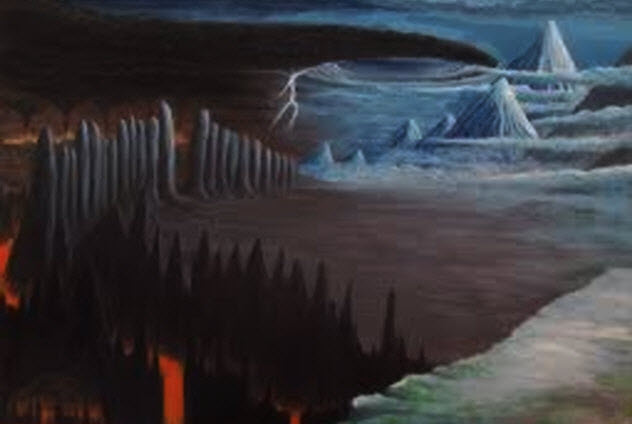
Before the world existed, there was nothing but an empty space known as Ginnungagap. In this void, there was a sea of fire and a collection of glaciers. Eventually, they collided with each other.
The result of the collision was Ymir, a hermaphroditic being who created the first giant. Within the frozen glaciers of Ginnungagap, there was also a god named Buri, the first of the Aesir. A few generations later, Odin—half Aesir and half giant—was born along with his two brothers, Vili and Ve.
Eventually, the three of them got together and decided to create the new world. To do that, they murdered Ymir and turned each of his body parts into a part of the world.
Ymir’s skin became the Earth. His skull became the sky. His brains became the clouds. His blood became the sea. Finally, his bones and teeth became the rocks and pebbles, respectively.
9 An Odd Use Of Sewing
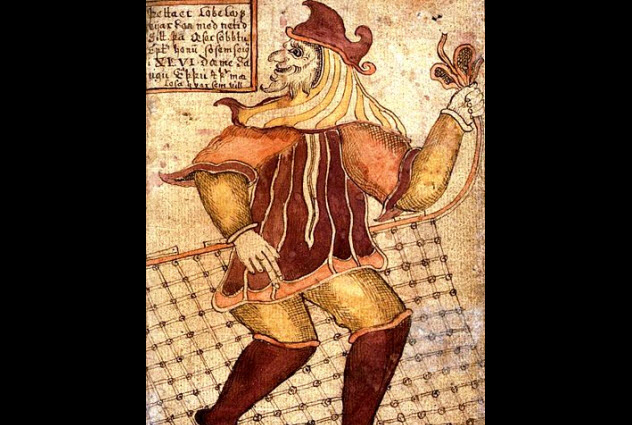
With complete disregard for his own safety, Loki once decided that it would be extremely comical if he shaved the head of Sif, Thor’s wife, while she slept. After a suitable amount of rage from Thor, Loki was able to hold off Thor’s physical anger by promising new hair for Sif that was crafted by dwarfs.
After Loki found the dwarfs, he asked them to make the new hair entirely from gold. The dwarfs agreed. Then they decided to make a few more gifts to please the rest of the gods.
Instead of simply leaving with the new hair and extra gifts, Loki bet the dwarfs that they could not make gifts that were greater than the ones they had just created. The winner of the bet would receive the loser’s head.
Loki lost the wager because the newest items included a ship that could be folded to fit into a pocket, a spear that never missed, and Mjolnir, Thor’s hammer.
When Loki tried to save his life by arguing that the dwarfs could have his head but not the attached neck, the dwarfs agreed to a compromise. They got Thor to knock Loki unconscious before sewing Loki’s mouth shut with leather.
8 Thor As A Pretty Lady
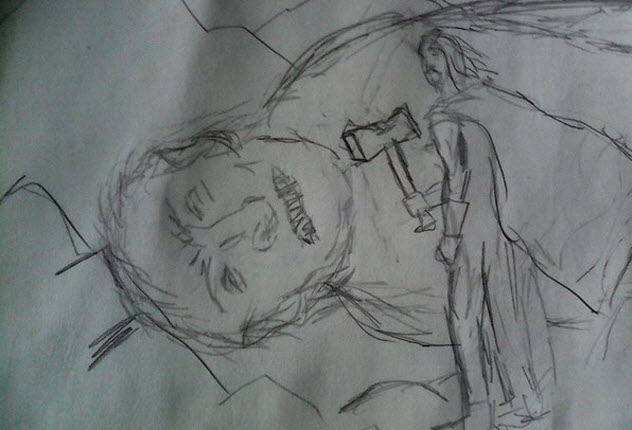
Although Thor had several children, it could be argued that he was more protective of his hammer, Mjolnir, than his offspring. In fact, Thor went on the warpath when he woke up one morning to find that his hammer had been stolen.
The thief was a giant named Thrymr. He offered to return the hammer only if he was allowed to marry Freyja as a kind of strange ransom. Thor and Loki agreed to Thrymr’s terms. But when Freyja learned that they intended to trade her to one of their biggest enemies for a hunk of metal, she flatly refused.
That’s when Thor went to plan B—dressing up as a lady to try to pass for Freyja. After dressing to the nines in a gown, jewelry, and headdress, Thor entered Thrymr’s castle with Loki by his side. Loki had shape-shifted into a handmaiden.
Surprisingly, the two of them made it through the pre-wedding feast without blowing their cover. They recovered Mjolnir when it was brought out as part of the wedding ceremony. The myth ended with Thor, in full queen garb, killing everyone in the room.
7 The Eight-Legged Horse
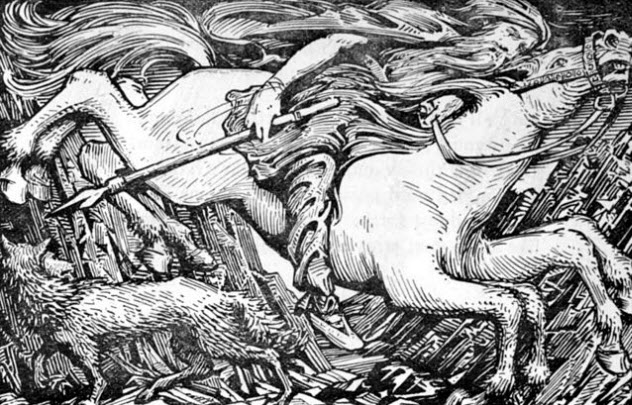
If there was one thing that the Aesir hated, it was giants. The feeling was mutual, and it became obvious that Asgard was under a legitimate threat from giants who started fights for no particular reason.
Shortly after the nine worlds were created, the nameless “master builder” showed up in Asgard. He threw down the gauntlet, claiming that he would build a giant-proof wall around Asgard in three years if marriage to Freyja was his main form of payment. For some reason, he also wanted the Sun and the Moon.
The gods eventually agreed to give the master builder only one year to complete the job, no assistance but that of a workhorse, and Freyja as his only payment. It seemed like a great bargain because the gods were convinced that the task could not be completed in one year. Asgard was huge.
But the builder was so highly motivated to “win” Freyja that he worked almost nonstop. So Loki decided to take charge of the situation. As proven by several myths, Loki was an adept shape-shifter. If he could turn himself into a woman, a salmon, and a hawk, he could easily turn himself into a horse. A lady horse to be specific.
Loki shape-shifted into a mare and lured the giant’s workhorse from the job site. As a result, the wall was not completed when the year was up. Ultimately, Thor killed the master builder, who was a giant in disguise. Meanwhile, Loki was MIA for several months before returning with an eight-legged horse named Sleipnir.
6 The Triathlon Gone Wrong
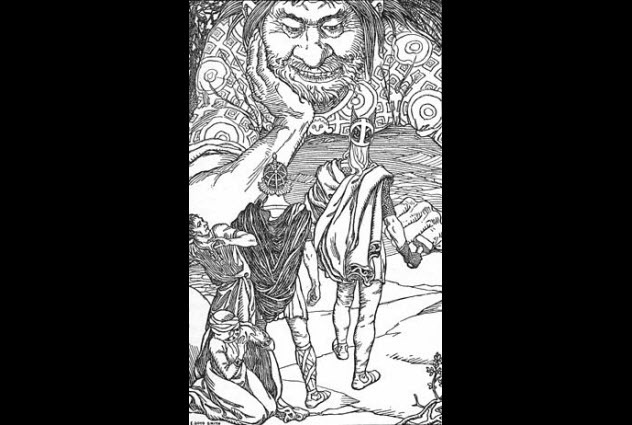
With Loki in tow, Thor would sometimes go on random day trips simply to find trouble. On one such trip, Thor also brought along his servant Thjalfi. After a solid day of traveling, the three were stuck in a forest with no shelter except a large cave with a weirdly branching layout.
The cave was actually a glove which belonged to a being who called himself Skrymir. He was a giant so large and intimidating that even Thor didn’t want to bother him. Skrymir pointed the three of them in the direction of Utgard, a castle filled with giants waiting to fight.
Skrymir warned them not to irritate the giants living there. But Thor and his companions immediately ignored the warning. The king of this particular castle—whose name was Utgard-Loki—informed the three that they couldn’t stay unless each proved his unbeatable skill in some area.
Loki’s skill was eating extremely quickly, Thor’s was imbibing alcohol, and Thjalfi’s was his speed. Each of them was pitted against an opponent from Utgard, and they all failed miserably.
By the time that Loki had eaten his share of the meat, his opponent had eaten the other half as well as the bones and half of the trough. When Thor had taken in as much as he could, it didn’t even make a dent in the mead. Thjalfi had run barely 3 meters (10 ft) before his opponent had won the entire race.
As it turned out, the giant who called himself Skrymir was actually Utgard-Loki. He had been fooling the three of them the entire time—pitting Thor against a literal ocean, Loki against fire, and Thjalfi against the speed of thought itself.
5 That Weird Thing Called Parenthood
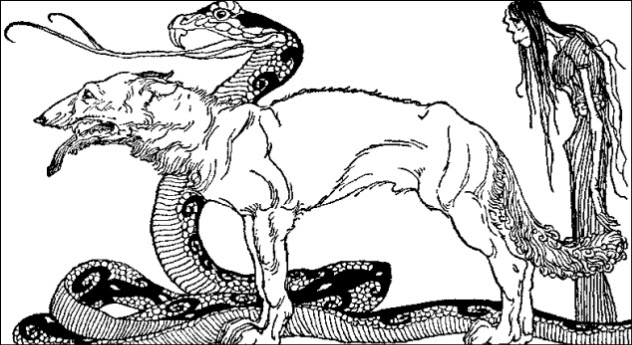
As previously mentioned, one of Loki’s children was Sleipnir, an eight-legged horse that resulted from Loki sabotaging a bet between Odin and a giant. However, Loki didn’t stop there. Several wild nights with the same giantess left him with at least three more children. Then there was at least one more son who was all but anonymous in the myths. But all five of these children were involved in Ragnarok, the Norse apocalypse.
Loki’s second child was Hel, a humanlike creature who became the ruler of the Norse underworld. Loki’s third child was Fenrir, a wolf so large that he had to be chained. He only broke loose when Ragnarok occurred. Loki’s fourth child was Jormungandr, a gigantic snake that literally held the world together by grasping its tail in its mouth.
When Ragnarok started, Odin rode Sleipnir into battle. Loki had banded together with Hel to lead an army of the dead into battle. But Odin was destined to be killed by Fenrir, and Thor was fated to kill and be killed by Jormungandr. Finally, the anonymous son was eventually slain, and his intestines were turned into iron chains that bound Loki after he caused Baldur’s death.
4 Odin The One-Eyed Wikipedia
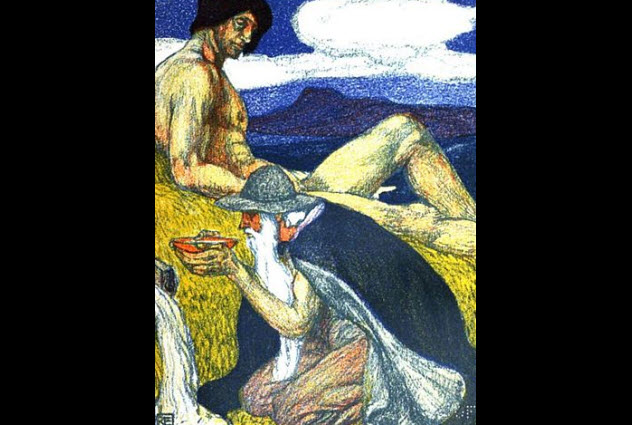
Odin was nothing if not wise. His wisdom came from his obsessive desire to understand absolutely everything. He frequently made sacrifices—often of a self-mutilating nature—to gain knowledge because he believed that knowledge was worth any price. Never mind the fact that he once hanged himself, stabbed himself, and forced himself to fast for over a week to discover and understand the Norse runes.
Perhaps an even better example of Odin’s extreme thirst for knowledge—and the reason for his one-eyed appearance—was his journey to Mimir’s well. Those who successfully partook of the water came away with almost divine knowledge.
So Odin once rode to Mimir and requested a drink. Mimir agreed to spare a mouthful but made Odin’s eye the price of the drink. Not only did Odin agree to this price, but he gouged the eye out himself.
3 Get Out From Under The Mistletoe
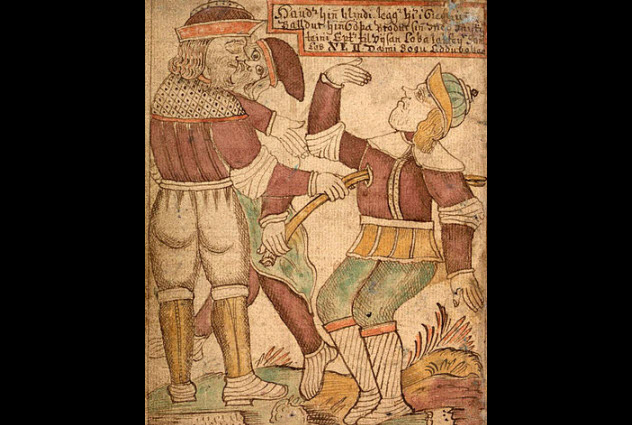
You wouldn’t think that mistletoe was dangerous. But it was used in one of Loki’s greatest crimes: the death of Baldur. Contrary to the popular MCU portrayal, Thor was not the golden boy of Asgard. Instead, it was his brother Baldur.
Believed to be the favorite god, Baldur apparently broke the Norse stereotype by being pleasant. Given Baldur’s beloved status, everyone was understandably disturbed when he claimed to have dreams about his death.
Odin took a trip to the underworld to look for answers and returned with bad news: Baldur’s dreams were indeed prophetic. In addition, Baldur’s death was so important that it served as an omen for the onset of Ragnarok.
Frigg, Baldur’s mother, forced every single thing in the universe to swear not to harm her son. Everything except for mistletoe because she didn’t think that it could harm Baldur. While all of this was happening, the gods made a fun game out of throwing things at Baldur because he was now all but invincible.
After Loki discovered that mistletoe was Baldur’s equivalent of an Achilles’ heel, Loki went back to the games. In true trickster fashion, he handed the blind Hodr a piece of mistletoe so large that it was described in the myths as a “shaft.” Loki told Hodr to have fun. Happy to finally join in the games, Hodr threw the mistletoe so hard that went it straight through Baldur, killing him instantly.
2 Poison Is Bad For Your Skin

Despite his wit, Loki was frequently responsible for the problems within the Aesir tribe. The little good that he did probably just resolved mistakes that he had made in the first place.
Often, Loki was punished for his misdeeds, and then everyone ignored what had happened. But everyone has their limits. With Loki, the final straw occurred when he talked a blind god into accidentally killing Baldur with a giant branch of mistletoe and sped up the arrival of Ragnarok.
Odin was determined to capture Loki, who fled Asgard to try to save his own life. Loki holed up in a house specifically engineered to keep watch at all times. During the day, he hid in nearby waterfalls as a salmon to avoid detection.
Nevertheless, Odin deduced where Loki was and eventually captured the wily trickster. Loki was taken to a cave that served as his prison. He was fastened in place with iron chains fashioned from the entrails of one of his sons.
To add insult to injury, a snake with seemingly endless reserves of venom was placed on a rock just above his head. The venom was strong enough to cause Loki to shake the entire Earth with his convulsions whenever the venom made contact with his skin.
1 Floating Heads And Magic Herbs
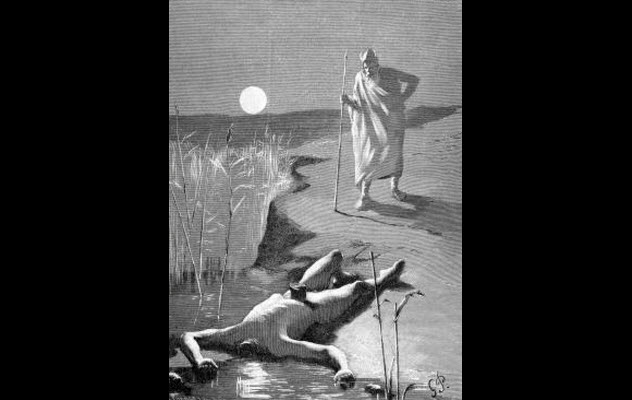
Mimir was considered to be the wisest of all the Aesir. In fact, he was often asked to provide counsel to the gods. But his existence changed dramatically after the Aesir went to war with a sister tribe called the Vanir.
During this battle, it became apparent that both sides were equally matched. The Aesir and the Vanir tried to end their conflict with a truce that included an exchange of hostages. Mimir functioned as the hostage offered up by the Aesir.
But that’s where things went south for Mimir. Although the Aesir sent his full body to the Vanir, they received only Mimir’s head in return.
The head was taken back to Asgard, where Odin used herbs to keep it from rotting and sang magical songs to keep it from dying. Eventually, Mimir’s living head was relocated to the well of Urd where it floated in the water from then on.
Roxanne is an aspiring writer and editor of fiction who drinks too much coffee.








